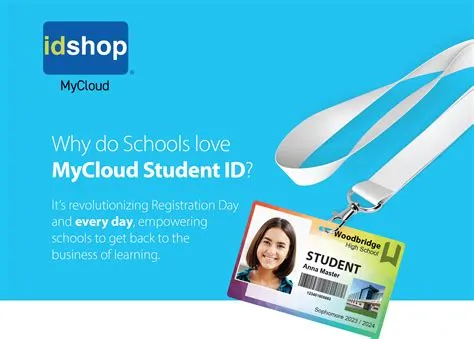Hey there, business owners and HR managers! Let’s face it, ID cards aren’t exactly known for their excitement. They’re often seen as just a necessary evil, a bit of plastic to swipe at the door. But what if I told you that your ID cards could be so much more? What if they could be a powerful tool for branding, a reflection of your company culture, and even a boost to your company’s security? In this article, we’ll dive into the hottest trends in business ID card design, transforming that boring piece of plastic into a dynamic asset.
We’re talking about moving beyond the standard corporate logo slapped onto a plain white card. Think vibrant colors, innovative materials, and even smart technology integration. We’ll explore how to leverage design to improve employee engagement, streamline processes, and enhance your overall brand identity. Sounds interesting, right? Let’s get started!
The Rise of Minimalism and Modern Aesthetics
Gone are the days of cluttered, overly busy ID cards. The current trend leans heavily towards minimalist designs. Think clean lines, bold typography, and a focus on a single, impactful image or logo. This approach conveys professionalism and sophistication, instantly upgrading your company’s image. It’s like a well-tailored suit – simple yet elegant and undeniably effective.
Think about it: a less-is-more approach makes the essential information – name, employee ID, photo – stand out more prominently. No more squinting at tiny text! This makes the card more functional and user-friendly.
This trend is closely related to the growing popularity of modern design principles. We are seeing a move away from ornate details towards clean, contemporary aesthetics. This reflects the overall trend towards simplicity and efficiency in many aspects of business.
Eco-Friendly Materials and Sustainable Practices
Sustainability is no longer a niche concern; it’s a mainstream priority. And this extends to ID cards too! More and more businesses are opting for eco-friendly materials like recycled plastic or even plant-based alternatives. This isn’t just about doing the right thing for the planet; it’s also a powerful marketing message. Consumers and employees are increasingly drawn to companies that demonstrate a commitment to environmental responsibility. You can learn more about eco-friendly ID card materials here.
Imagine the impact of proudly displaying your commitment to sustainability on your ID card itself, reinforcing your brand’s values in a tangible way. It’s a silent but powerful statement of your corporate social responsibility.
Further enhancing this commitment are eco-friendly printing techniques. These methods not only reduce your environmental footprint but also contribute to a cleaner, healthier workplace.
Technology Integration: Smart Cards and Beyond
The future of ID cards is undeniably digital. We’re seeing an increasing integration of smart technologies, transforming them from simple identification tools to multi-functional devices. This could include embedded chips for access control, contactless payment capabilities, or even health monitoring features.
Think of it as an all-in-one solution, simplifying daily operations and enhancing security. One card can do it all! This integration not only streamlines processes but also creates a more seamless experience for employees.
Want to learn more about technology-integrated ID cards? We’ve got you covered!
Customization and Personalization: Adding a Human Touch
While consistency is crucial for branding, personalization adds a human touch. This might include subtle variations in design based on department or role, or even allowing employees to personalize certain elements. It shows you value your team, and it makes the ID card feel less like a generic corporate item and more like a personal belonging.
Imagine a scenario where you allow employees to choose from a selection of background colors or add a small personal touch. This approach fosters a sense of belonging and ownership, enhancing engagement.
Explore our resources on customization and personalization in ID card design to uncover further possibilities.
Industry-Specific Designs: Tailoring to Your Needs
One size definitely doesn’t fit all when it comes to ID cards. Different industries have unique needs and branding requirements. A healthcare provider will have different needs compared to a tech startup. A well-designed ID card should reflect this. This means tailoring designs to specifically reflect the values and image of your particular industry. This could involve specific color palettes, symbols, or even the incorporation of industry-related imagery.
For example, a construction company might incorporate hard-wearing materials and a bold, industrial aesthetic, whereas a design firm might opt for a more sleek and modern approach. This level of specificity enhances brand recognition and professionalism within your industry sector.
To discover more industry-specific design inspiration, check out our blog on industry-specific ID card designs and learn how to tailor your design to your field.
Cloud-Based ID Card Storage Solutions: The Modern Approach
In today’s digital world, managing physical ID cards can become cumbersome and inefficient. Enter cloud-based storage solutions. This offers a secure and accessible way to store and manage employee information, eliminating the need for bulky filing cabinets and reducing the risk of loss or theft. Think of it as a digital filing cabinet, always readily accessible and far more secure than a physical one. It improves efficiency and simplifies processes significantly.
Furthermore, a cloud-based system allows for easier updates and management of employee information. No more reprinting cards every time there’s a change! Plus, you’ll find it’s a more environmentally friendly option, reducing paper waste and its associated costs. This modern approach enhances efficiency and simplifies management while ensuring data integrity.
Learn more about how cloud-based solutions can revolutionize your ID card management by visiting our comprehensive guide on cloud-based ID card storage solutions.
Branding with ID Cards: A Powerful Statement
Your ID card isn’t just a piece of identification; it’s a walking, talking advertisement for your brand. It’s a subtle yet powerful way to reinforce your company’s image and values every single day. Consider it a miniature billboard that your employees carry around everywhere! The visual elements – color schemes, fonts, and imagery – should all be carefully selected to reflect your company’s overall branding strategy.
By incorporating consistent branding elements across your ID cards, you reinforce brand recognition among employees, clients, and the wider community. Think about the subtle yet effective reinforcement of your brand identity whenever an employee interacts with a customer or client.
Find out more about harnessing the power of ID cards for effective branding by reading our article on branding with ID cards.
Security and Access Control: Protecting Your Assets
Beyond branding, ID cards play a crucial role in security and access control. Features like holographic security elements, UV printing, and embedded chips can help prevent counterfeiting and unauthorized access. These features provide an added layer of protection for your sensitive information and company assets. Think of it as a multi-layered security system, safeguarding your business from potential threats.
This is especially important in industries where security is paramount, such as healthcare, finance, and government. These features contribute to a secure environment and protect valuable company resources.
Explore the many ways ID cards enhance security and access control by reviewing our resources on security and access control.
Conclusion
Designing innovative business ID cards is more than just picking a color and adding a logo. It’s about crafting a powerful tool that enhances your brand, streamlines your processes, and protects your assets. By incorporating the latest design trends, from minimalist aesthetics to eco-friendly materials and smart technology integration, you can elevate your ID card from a simple necessity to a dynamic asset that reflects your company’s values and enhances its image. Remember, your ID card is a reflection of your brand – make it count!
FAQs
- What are the most popular eco-friendly ID card materials? Popular choices include recycled PVC, plant-based plastics (like those made from corn or sugarcane), and biodegradable materials. The best choice will depend on your specific needs and budget.
- How can I integrate technology into my ID cards? Technology integration can range from simple barcode or QR code incorporation to more advanced features like RFID chips or contactless payment capabilities. The best option will depend on your budget and security requirements.
- How much does it cost to design and print custom ID cards? The cost varies significantly depending on the materials, printing methods, quantity, and level of customization. It’s best to obtain quotes from several ID card providers.
- What are the latest design trends for industry-specific ID cards? Current trends vary by industry, but generally favor clean, minimalist designs with a strong emphasis on brand identity and functionality. Consider using your industry’s specific color scheme or imagery.
- How can I ensure my ID cards are secure? Employing security features such as holograms, UV printing, and unique identification numbers are critical. Consider working with a provider specializing in secure ID card production.

